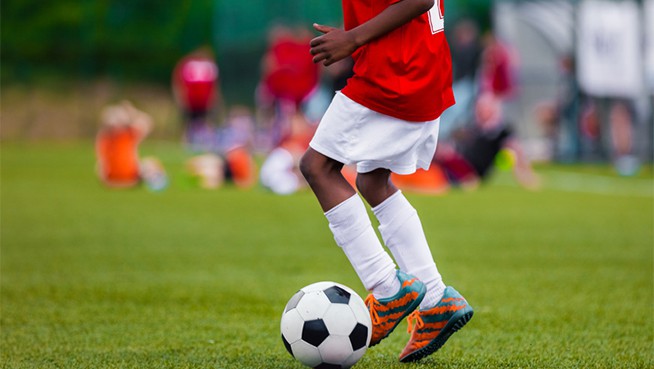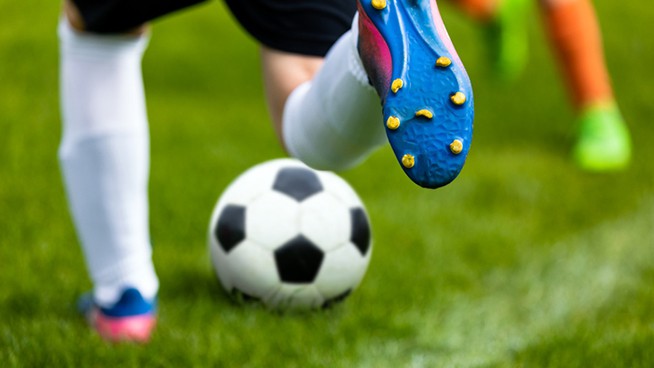An A-to-Z Guide for Hockey Goalies
The following is an on- and off-ice collection of reminders for hockey goalies. Some of these work very well for the defensemen and wings, too.
A – Ankle weights. Wear them both on and off the ice as much as you can to improve your skating speed and endurance.
B – Be prepared. Don’t daydream when the puck is at the other end of the ice, because the situation can change in seconds. Your stick is down on the ice whenever the puck is in your zone. Odd deflections of the puck can happen at any time.
C – Communicate with your teammates. You may not hear it on television, but there is lots of talk on the ice during NHL games.
D – Defense needs to hear you on the ice often. Call out any opposing players who might be out of the view of your defense, especially the hangers in the slot, or just outside the crease area.
E – Exercise off the ice. Elliptical and bicycling are two of the best forms for you.
F – (1) Follow the puck on the ice and tune out distractions as best you can. At the same time, be aware of the opposing jerseys looming in your vicinity.
(2) “Forearms are forewarned!” You need to develop champion arm-wrestling skills for your stick hand. But don’t neglect your goalie glove hand.
(3) Fix your equipment right after your game or practice. It won’t repair itself.
G – Girl watch or crowd watch later or you’ll pay dearly in your goals-against average. Fans may be watching you, but you need to focus on the game.
H – (1) Hockey skills are built over many days, weeks, months and seasons of striving for self-improvement.
(2) Hydrate shortly before and during the game.
I – Initiate game strategies with comments based on your observations about opposing players.
J – Jumping rope is a nice alternative to running and jogging, less stressful on your feet and knees.
K – Kilocalorie or “calorie” intake needs to be watched. Minimize junk food.
L – Lay off of alcohol if you are of drinking age. Don’t ever drink if you’re underage. None of it will help the quality of your game, not to mention your liver, brain, bones and teeth.
M – Manage your time to balance your educational and family obligations.
N – No negatives in your comments to others on your team or group about their play. Remember, it’s a game, and being a good sport is part of it.
O – (1) Opposing team fights happen, but avoidance is a must, because you are in it for the whole game as a goaltender.
(2) Open your hockey bag when it is not in use. Most human pathogens like dark & moist areas, so any chance to air out your bag is good to prevent mold, not only in your bag but on some of your favorite equipment.
P – Puck control happens better with a lot of passing practice.
Q – Questions about hockey rules and regulations deserve your research.
R – (1) Rest up every day and avoid all-nighters.
(2) Reverse goalie. You won’t forget how to play on your favored side, but watch and see how hard it is to stop a puck with a set of gloves from the reverse side.
S – Shot clock or not, hone your muscle reflexes by playing the various other sports suggested in this article.
T – (1) Time yourself in skating from goal line to goal line across the rink.
(2) Train/cross-train with various sports, including handball, racquetball, baseball, volleyball, tennis and even ping pong.
U – Unofficial team captain. As a goaltender, you are often considered this, or at least an unofficial assistant captain. This is because of your perspective on the ice about game play.
V – Victories on the ice should not build overconfidence.
W – Watch your periphery during play in your zone. Let your defensemen know about the hangers and opposing slotmen.
X – Xamine your equipment after you play for any wear or breakage. Don’t merely throw it in your bag.
Y – Young or old, the “sweat factor” in workouts will benefit you many times over.
Z – Zs are the cartoon artist’s symbolic representation of sleeping. Top play on the ice requires you to be well rested off the ice.
[cf]skyword_tracking_tag[/cf]RECOMMENDED FOR YOU
MOST POPULAR
An A-to-Z Guide for Hockey Goalies
The following is an on- and off-ice collection of reminders for hockey goalies. Some of these work very well for the defensemen and wings, too.
A – Ankle weights. Wear them both on and off the ice as much as you can to improve your skating speed and endurance.
B – Be prepared. Don’t daydream when the puck is at the other end of the ice, because the situation can change in seconds. Your stick is down on the ice whenever the puck is in your zone. Odd deflections of the puck can happen at any time.
C – Communicate with your teammates. You may not hear it on television, but there is lots of talk on the ice during NHL games.
D – Defense needs to hear you on the ice often. Call out any opposing players who might be out of the view of your defense, especially the hangers in the slot, or just outside the crease area.
E – Exercise off the ice. Elliptical and bicycling are two of the best forms for you.
F – (1) Follow the puck on the ice and tune out distractions as best you can. At the same time, be aware of the opposing jerseys looming in your vicinity.
(2) “Forearms are forewarned!” You need to develop champion arm-wrestling skills for your stick hand. But don’t neglect your goalie glove hand.
(3) Fix your equipment right after your game or practice. It won’t repair itself.
G – Girl watch or crowd watch later or you’ll pay dearly in your goals-against average. Fans may be watching you, but you need to focus on the game.
H – (1) Hockey skills are built over many days, weeks, months and seasons of striving for self-improvement.
(2) Hydrate shortly before and during the game.
I – Initiate game strategies with comments based on your observations about opposing players.
J – Jumping rope is a nice alternative to running and jogging, less stressful on your feet and knees.
K – Kilocalorie or “calorie” intake needs to be watched. Minimize junk food.
L – Lay off of alcohol if you are of drinking age. Don’t ever drink if you’re underage. None of it will help the quality of your game, not to mention your liver, brain, bones and teeth.
M – Manage your time to balance your educational and family obligations.
N – No negatives in your comments to others on your team or group about their play. Remember, it’s a game, and being a good sport is part of it.
O – (1) Opposing team fights happen, but avoidance is a must, because you are in it for the whole game as a goaltender.
(2) Open your hockey bag when it is not in use. Most human pathogens like dark & moist areas, so any chance to air out your bag is good to prevent mold, not only in your bag but on some of your favorite equipment.
P – Puck control happens better with a lot of passing practice.
Q – Questions about hockey rules and regulations deserve your research.
R – (1) Rest up every day and avoid all-nighters.
(2) Reverse goalie. You won’t forget how to play on your favored side, but watch and see how hard it is to stop a puck with a set of gloves from the reverse side.
S – Shot clock or not, hone your muscle reflexes by playing the various other sports suggested in this article.
T – (1) Time yourself in skating from goal line to goal line across the rink.
(2) Train/cross-train with various sports, including handball, racquetball, baseball, volleyball, tennis and even ping pong.
U – Unofficial team captain. As a goaltender, you are often considered this, or at least an unofficial assistant captain. This is because of your perspective on the ice about game play.
V – Victories on the ice should not build overconfidence.
W – Watch your periphery during play in your zone. Let your defensemen know about the hangers and opposing slotmen.
X – Xamine your equipment after you play for any wear or breakage. Don’t merely throw it in your bag.
Y – Young or old, the “sweat factor” in workouts will benefit you many times over.
Z – Zs are the cartoon artist’s symbolic representation of sleeping. Top play on the ice requires you to be well rested off the ice.
[cf]skyword_tracking_tag[/cf]









